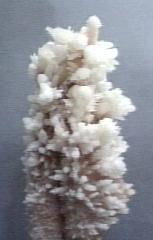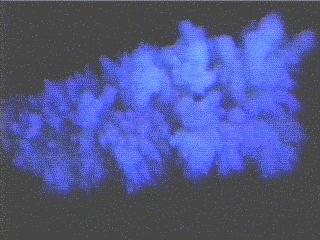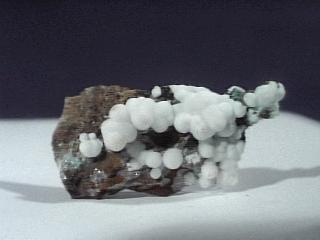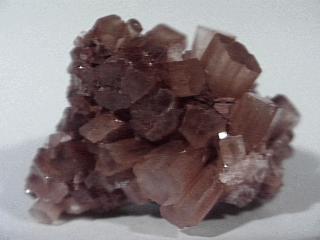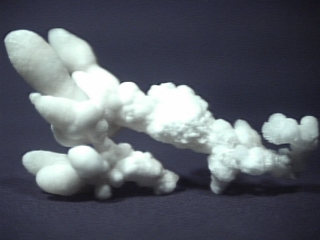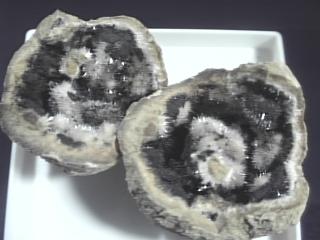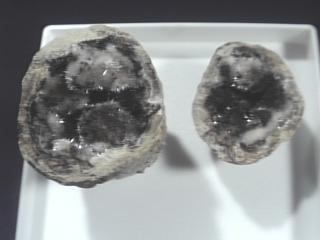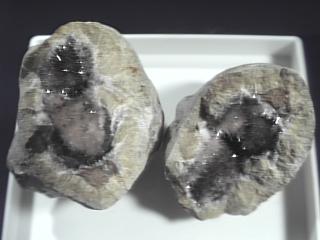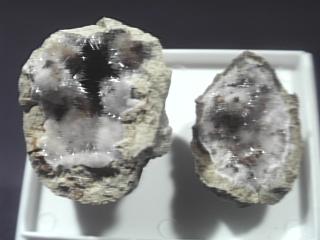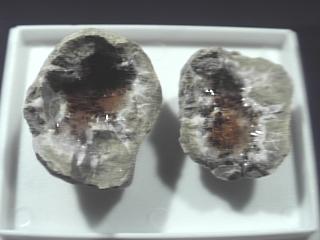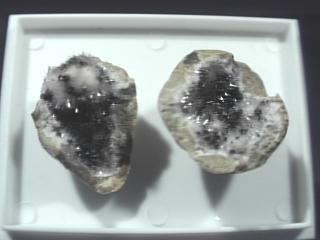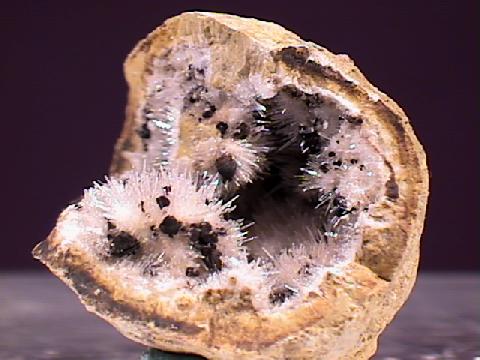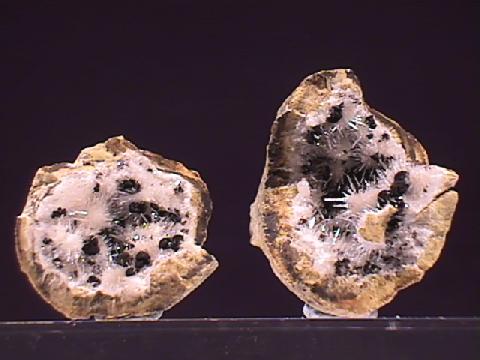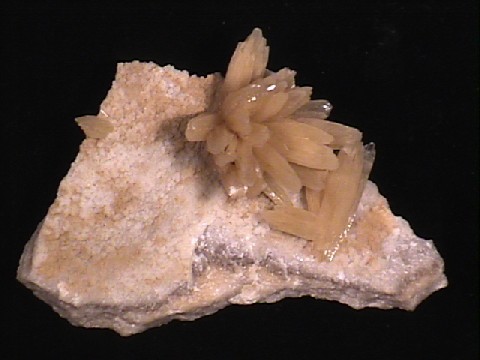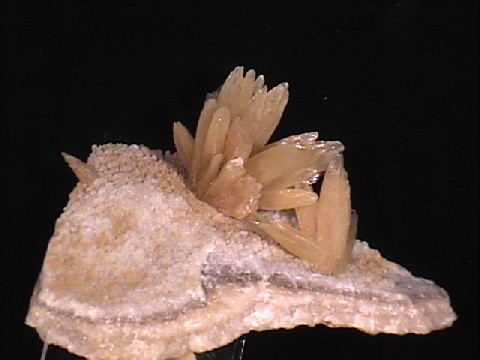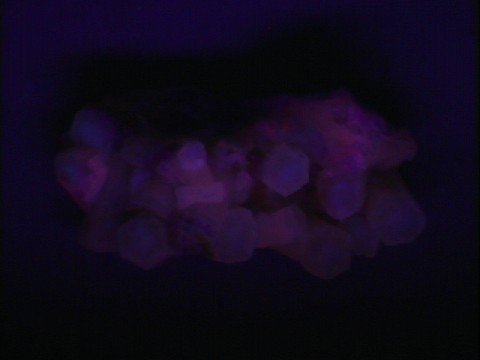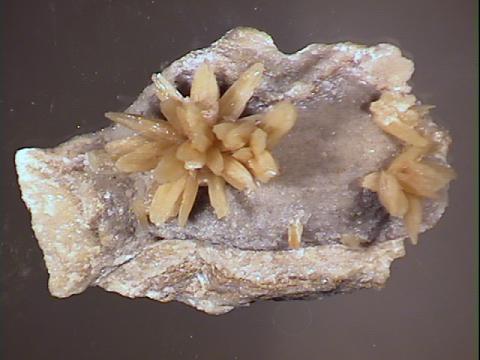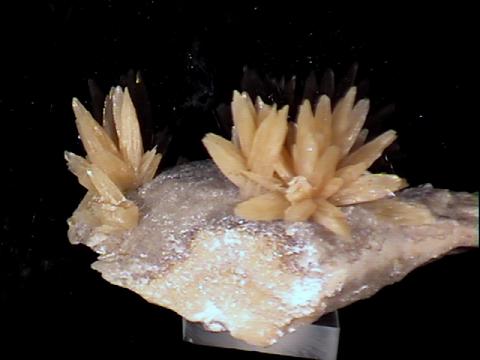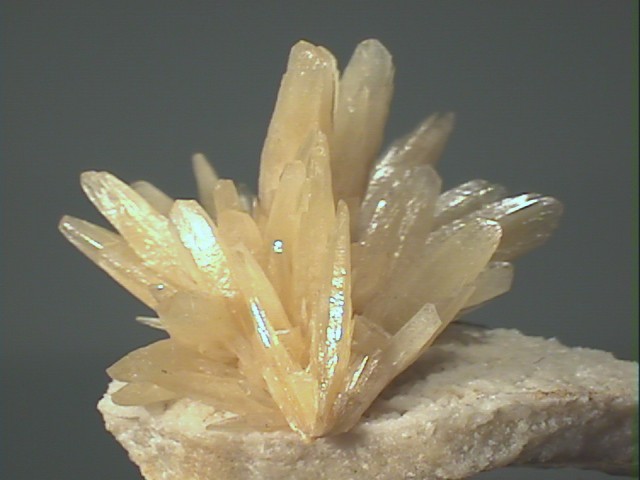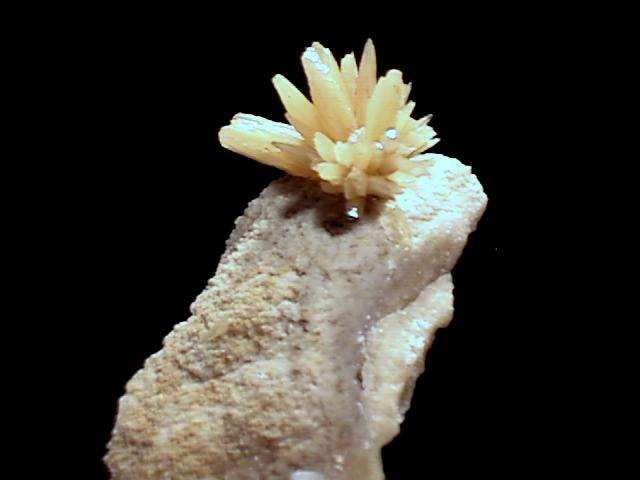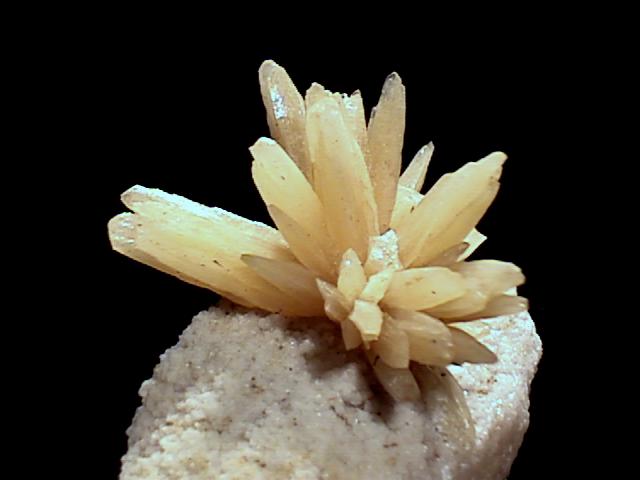 The Mineral ARAGONITE
The Mineral ARAGONITE
- Chemistry: CaCO3, Calcium Carbonate
- Class: Carbonates
- Group: Aragonite
- Uses: minor constituent of limestone which is used in cement and in steel production, ornamental carvings and as mineral specimens.
Specimens
Aragonite is a common carbonate mineral. It is unfortunately often thought of as the poor cousin to calcite. But aragonite is an interesting and attractive mineral in its own right. It forms interesting habits and can have a soft pretty color. Its modes of formation and relationship to calcite are both curious and intriguing.
Aragonite is a polymorph of calcite, which means that it has the same chemistry as calcite but it has a different structure, and more importantly, different symmetry and crystal shapes.
Aragonite's more compact structure is composed of triangular carbonate ion groups (CO3), with a carbon at the center of the triangle and the three oxygens at each corner.
Unlike in calcite, the carbonate ions do not lie in a single plane pointing in the same direction.
Instead they lie in two planes that point in opposite directions; destroying the trigonal symmetry that is characteristic of calcite's structure.
To illustrate this, imagine the symmetry of an equilateral triangle; a three fold rotation with three mirror planes that cross in the center.
Now join two of these triangles together at their bases and you have a diamond-shaped figure with the symmetry of a two fold rotation with one mirror plane in the middle.
This is what the effect of the two carbonate planes with opposite orientations has on the symmetry of this structure.
Aragonite has an orthorhombic symmetry (2/m 2/m 2/m) instead of calcite's "higher" trigonal (bar 3 2/m) symmetry.
A very rare mineral called
Carbonate minerals with this same structure as aragonite belong to the Aragonite Group of minerals. The structure is responsible for the similar properties of this group. Dissimilar properties are the responsibility or result of the differing metal cations in the various minerals of the group.
Aragonite is technically unstable at normal surface temperatures and pressures. It is stable at higher pressures, but not at higher temperatures such that in order to keep aragonite stable with increasing temperature, the pressure must also increase. If aragonite is heated to 400 degrees C, it will spontaneously convert to calcite if the pressure is not also increased. Since calcite is the more stable mineral, why does aragonite even form? Well under certain conditions of formation, the crystallization of calcite is somehow discouraged and aragonite will form instead. The magnesium and salt content of the crystallizing fluid, the turbidity of the fluid and the time of crystallization are decidedly important factors, but there are perhaps others. Such areas as sabkhas and oolitic shoals tend to allow significant amounts of aragonite to form. Also metamorphism that includes high pressures and low temperatures (relatively) can form aragonite. After burial, given enough time, the aragonite will almost certainly alter to calcite. Sedimentologists are very interested in aragonite and calcite stability fields because the conversion of aragonite to calcite after deposition has a distinct effect on the character of the sedimentary rocks.
Aragonite's most famous crystal habit is the twinned pseudo-hexagonal prismatic crystals that it produces. Twinning is the result of an error during the growth of the crystal. It occurs when the atomic layer stacking, in a sequence such as ABCABCABCABCABCABC etc, makes a mistake and a C layer instead of a B layer is place next to an A layer. The result is an ABCABCABCACBACBACBA stacking sequence (can you pick out the mistake?). Where the mistake occurs, a mirror plane is produced that was not there before (the left side is the mirror image of the right side). This has the effect of increasing the apparent symmetry of the crystal. The error in aragonite's structure causes a bend in the crystal of exactly 120 degrees. If three bends or twins occur, then a 360 degree crystal, called a cyclic twin or trilling, can form. In this case, aragonite can appear hexagonal (six sided). These crystals can be thought of as a "triple siamese twin" where one crystal takes up one third (or 120 degrees) of a hexagon.
Individual cyclic twins from Aragon, Spain have been popular but are being surpassed by the amazing clusters of aragonite twins that are now available from Morocco in large numbers. Aragon, Spain is where aragonite was first discovered and from where aragonite gets its name. Cyclic twins often show notches that separate the twin individuals. Aragonite also has another popular habit called flos ferri or "flowers of iron". This is a branching, clumpy habit that can make delicate tree, coral or worm-like formations that are most unique. A steep pyramidal habit forms clusters of sharp spiked crystals sometimes referred to as a "church steeple" habit. Aragonite is a constituent of many sea creatures' shell structures; a curious development since calcite is the more stable form of calcium carbonate. Most bivalve animals and corals secrete aragonite for their shells and pearls are composed of mostly aragonite. The pearlization and iridescent colors in sea shells such as abalone are made possible by several minute layers of aragonite. Other environments of formation include hot springs deposits, cavities in volcanic rocks, caves and mines.
PHYSICAL CHARACTERISTICS:
- Color can be white or colorless or with usually subdued shades of red, yellow, orange, brown, green and even blue.
- Luster is vitreous to dull.
- Transparency: Crystals are transparent to translucent.
- Crystal System is orthorhombic; 2/m 2/m 2/m
- Crystal Habits include twinned hexagonal prismatic crystals as well as a diverse assortment of thin elongated prismatic, curved bladed, steep pyramidal (spiked) and chisel shaped crystals. A branching tree, coral or worm-like delicate form is called "flos ferri". Can also be compact, granular, radially fibrous and massive. Its massive forms can be layered, coralloid, pisolitic, oolitic, globular, stalachtitic and encrusting. Aragonite is a constituent of many species' shell structures. A layered sedimentary marble like formation is called Mexican Onyx and is used for carvings and ornamental purposes. Calcite pseudomorphs of aragonite crystals and formations are common.
- Cleavage is distinct in one direction (pinacoidal).
- Fracture is subconchoidal.
- Hardness is 3.5-4
- Specific Gravity is 2.9+ (average for non-metallic minerals)
- Streak is white.
- Other Characteristics: aragonite effervesces easily in cold dilute hydrochloric acid, is strongly birefringent, is
fluorescent and its refractive index is 1.7 . - Associated Minerals include gypsum, barite, smithsonite, malachite, calcite, serpentine, sulfur, celestite, zeolites, quartz, clays, dolomite, limonite, chalcopyrite and wulfenite among many others.
- Notable Occurrences include Aragon, Spain (its type locality and from where it gets its name); Morocco; Bastennes, France; Girgenti, Sicily; Alston Moor and Cleator Moor,
Cumberland, England ; Baja California, Mexico (Mexican Onyx);Tsumeb, Namibia ; Carinthia, Austria; Leadhills, Scotland; Harz Mountains, Germany and in several localities in the Southwestern United States. - Best Field Indicators are crystal habits, single plane of cleavage and reaction to acid.

